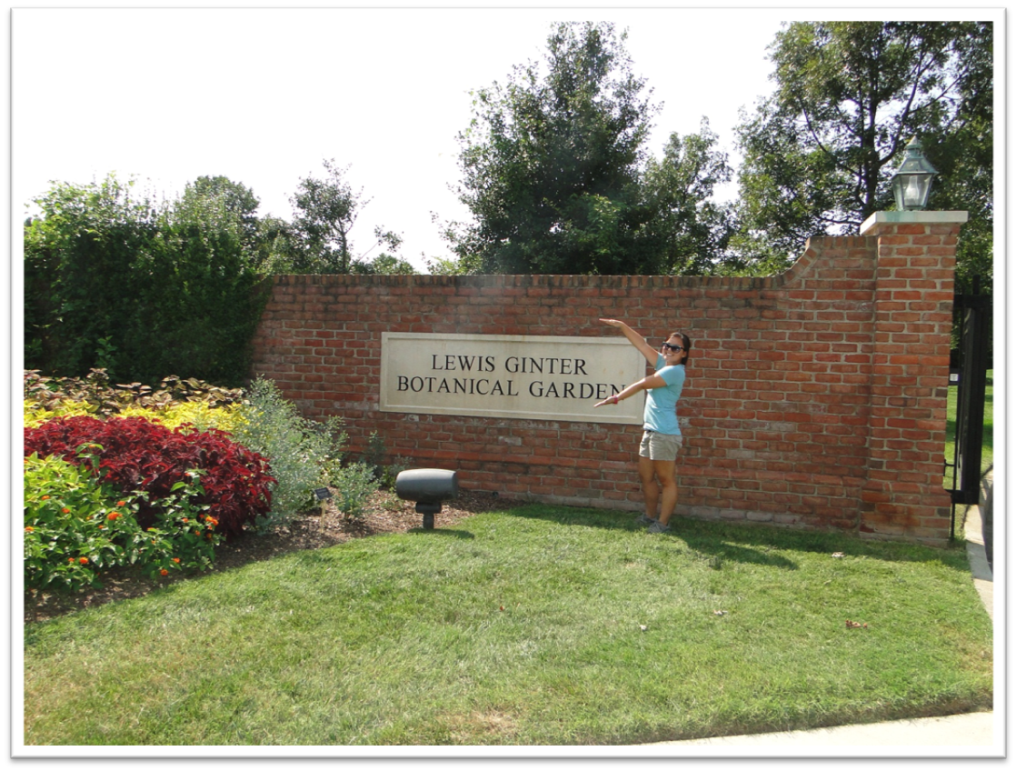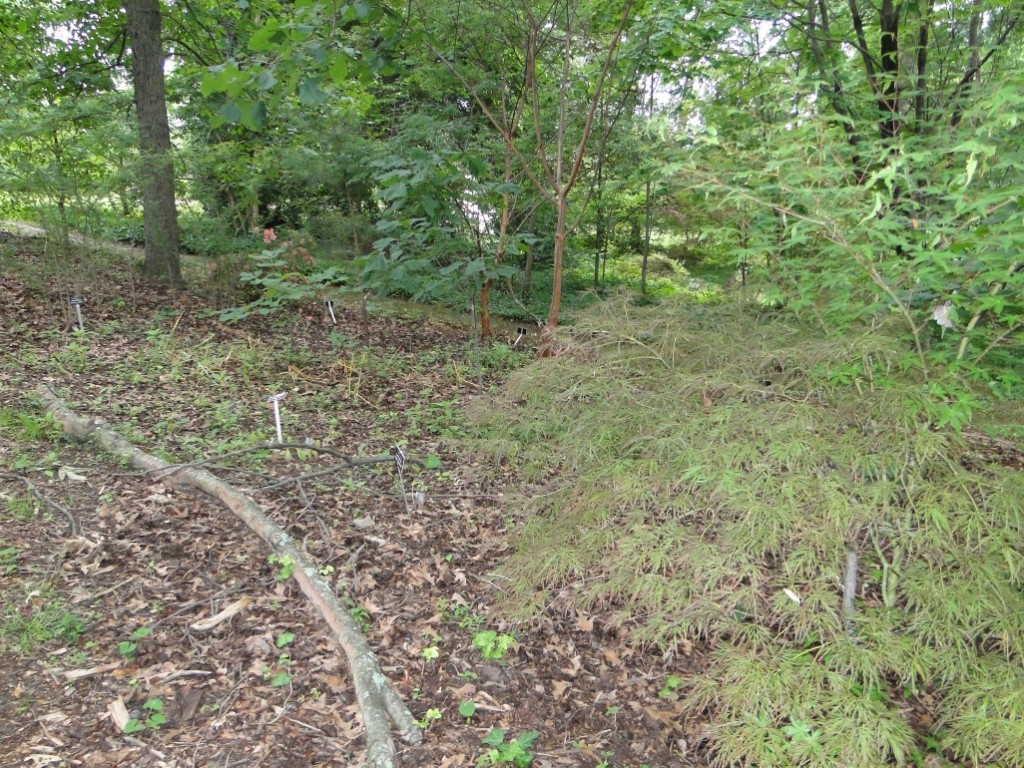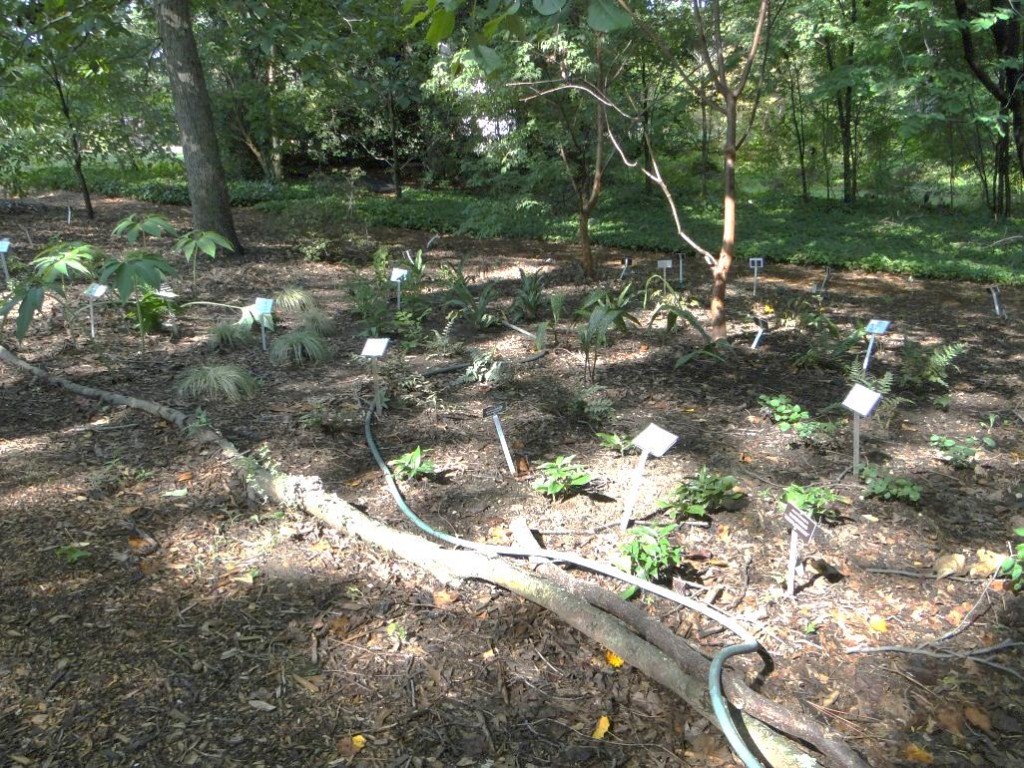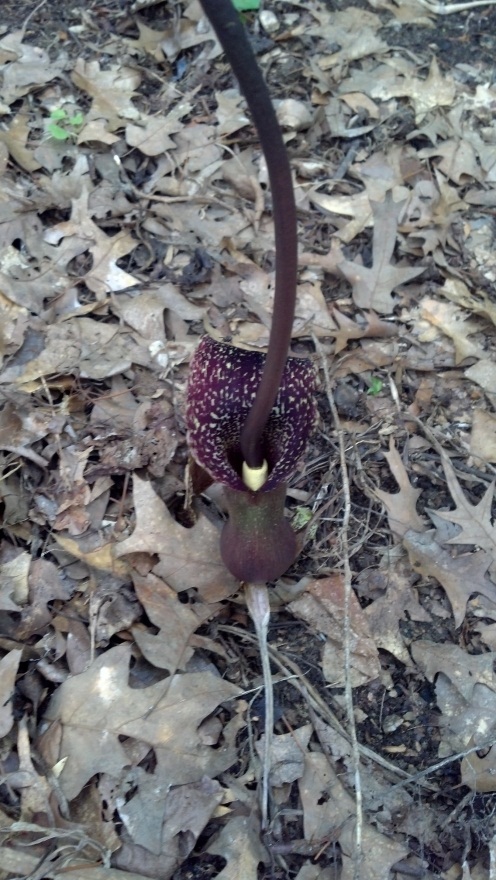Ever Wonder What to Plant in Your Dry Shade? We're Working on that!
by Amelia Hardy, Gilliam Research Intern, Lewis Ginter Botanical Garden
Interning at Lewis Ginter has been one of the best summers of my life. The fact that a college student, from Florida, says that working all summer is better than being a beach bum should speak magnitudes about how wonderful Lewis Ginter is. I was able to spend my summer gaining hands-on experience in a field that I love. The real icing on the cake is that not only was I doing what I love; I was surrounded by people who feel the same. I think that Lewis Ginter is such an extraordinary place because everyone has such a passion for what they are doing. This applies to not just the horticulture staff but the entire garden staff and also the impressively dedicated volunteer force. It is also evident that one of the goals of the garden is to be a public educator of horticulture. All of the horticulturalists are so knowledgeable and helpful, which was a great learning tool not only for myself but also all the visitors.
My official position at Lewis Ginter is the dry shade research intern. The goal of this project is to trial new or underutilized plants for dry shade so the garden is better able to advise home gardeners on what to plant in their own dry shade areas. The trial bed areas are also hoped to serve as inspiration for dry shade gardeners and allow them to see the plants in the ground before choosing them for their own garden. In all, I spent countless hours clearing the trial areas and planted 31 different species, almost 200 plants in total but it was all worth it to see the finished product.
Three other trial beds are located along the Wild Side Walk, behind Bloemendaal House.
One interesting specimen planted is the voodoo lily (Sauromatum venosum). It is a bulb that first puts out its fly-pollinated flower and then sends out its foliage.
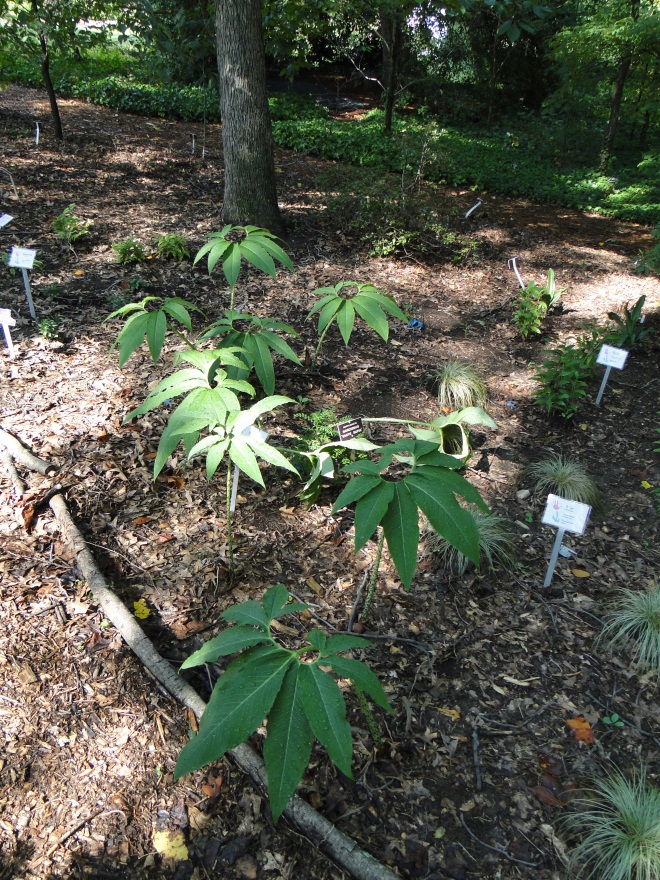
voodoo lily fly-pollinated flower
I think that the work I have done this year has laid a strong foundation to continue dry shade research in upcoming years. Future interns will continue to monitor the plants installed this year to see which species perform the best in Virginia’s climate. I hope that after I leave the trial beds continue to fill out, become even more beautiful and really start to serve their purpose. I am so grateful for the opportunity to be an intern at Lewis Ginter and I want to thank all the staff, volunteers, and visitors for making it such a wonderful experience.
Here’s a list of what we planted:
| 2012 Dry Shade Research Plants | |
| Asarum canadense | Wild Ginger |
| Asarum splendens ‘Quicksilver’ | Quicksilver Wild Chinese Ginger |
| Aspidistra elatior ‘Spektacular’ | Spektacular Cast Iron Plant |
| Athyrium asplenioides | Southern Lady Fern |
| Athyrium niponicum var. pictum ‘Burgundy Lace’ | Japanese Painted Fern |
| Athyrium x ‘Ghost’ | Ghost Fern |
| Carex comans ‘Frosted Curls’ | Sedge Frosted Curls |
| Carex flaccosperma | Blue Wood Sedge |
| Cheilanthes lanosa Montgomery Co, VA | Perennial Harry Lip Fern |
| Disporopsis pernyi | Evergreen Solomon’s Seal |
| Dodecatheon meadia | Shooting Star |
| Dryopteris ludoviciana | Southern Shield Fern |
| Dryopteris sieboldii | Siebold’s Wood Fern |
| Dryopteris x australis | Dixie Wood Fern |
| Epimedium x versicolor ‘Sulphureum’ | Sulphureum Fairy Wings |
| Filipendula ‘Red Umbrellas’ | Meadowsweet |
| Phegopteris hexagonoptera | Southern Beech Fern |
| Phlox glaberrima ‘Morris Berd’ | Smooth Phlox |
| Polemonium reptans ‘Touch of Class’ | Variegated Jacobs Ladder |
| Polygonatum canaliculatum | Solomon’s Seal |
| Polygonatum humile | Solomon’s Seal |
| Rohdea japonica | Sacred Lily |
| Sauromatum venosum | Voodoo Lily |
| Thelypteris kunthii | Abundant Maiden Fern |
| Tradescantia ‘Bilberry Ice’ | Spider Lily ‘Bilberry Ice’ |
| Tradescantia ‘Little Doll’ | Spider Lily ‘Little Doll’ |
| Tricyrtis formosana ‘Dark Beauty’ | Japanese Toad Lily |
| Tricyrtis hirta ‘Moonlight’ | Japanese Toad Lily |
| Trillium flexipes | White Nodding Trillium |
| Trillium grandiflorum | Great White Trillium |
| Trillium luteum | Yellow Trillium |
Note: The Gilliam Research Intern is a paid internship, made possible by a bequest from Lucy Crockin who left restricted funds for the creation of the Henry Eugene Gilliam Plant Experimentation and Research Endowment Fund dedicated to plant experimentation and research at Lewis Ginter Botanical Garden. For the past two years, the Garden’s interns have focused their study on herbaceous plants for dry shade environments.
